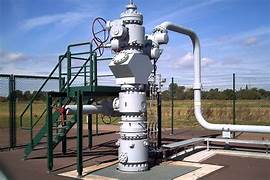Learning Objective: This course stresses
practical application of well test theory to design and interpret pressure
transient tests. An integrated approach to well test interpretation is
emphasized throughout the course. This course will focus on the different types
of tests and techniques, both analytical and graphical, for data representation
and analysis of well tests.
Target Audience: Engineers and geoscientists
who wish to learn about well testing principles and interpretation
methodologies so they can design, analyze, report, and evaluate results, as
well as participate intelligently in the well testing process. It is preferred
that you have prior experience in production and/or reservoir engineering.
Prior well-testing experience is beneficial but not essential.
Course Duration: 5+ hours
Prerequisites:
Outcome from this course:
- Analyze drawdown and build-up tests in oil and gas wells
-
Identify
flow regimes using the log-log diagnostic plot
-
Describe
characteristic pressure behaviour for common bounded reservoir geometries
-
Types
of techniques covered will include diagnostic plots-derivative for draw down,
& build-up tests.
-
Participants
will learn about the interpretation of complex data, such as those from well
test in naturally fractured reservoirs, hydraulically fractured wells,
horizontal wells, along with gas and gas condensate reservoirs.
-
There will be a pre and post assessment at the end of this course.
Topics to be covered:
1. The
basic concepts for test analysis:
-
Basic
concepts for test analysis
-
Steady
state, semi-steady state, and transient well performance
-
Radial
Flow Theory
-
The
Diffusivity Equation
2. Interpretation
of well test data:
-
The
Principle of Superposition
-
Drawdown
and build-up testing
-
Semi-log
analysis
-
Estimating
average reservoir pressure
3. Interpretation
of well test data:
-
Wellbore
storage and type curve matching –
-
Diagnostic
and derivative analysis
-
Formation
damage & Skin factor
-
Radius
of Investigation
4. Well
test models:
-
Radial
Composite Systems
-
Well
in a Bounded Drainage Area
-
Channel
Sands and Parallel Faults
-
Well
Test Design
5. Special
Topics:
-
Horizontal
well testing
-
Analysis
of Hydraulically Fractured Wells
-
Dual
Porosity Systems
-
Double
Permeability System


